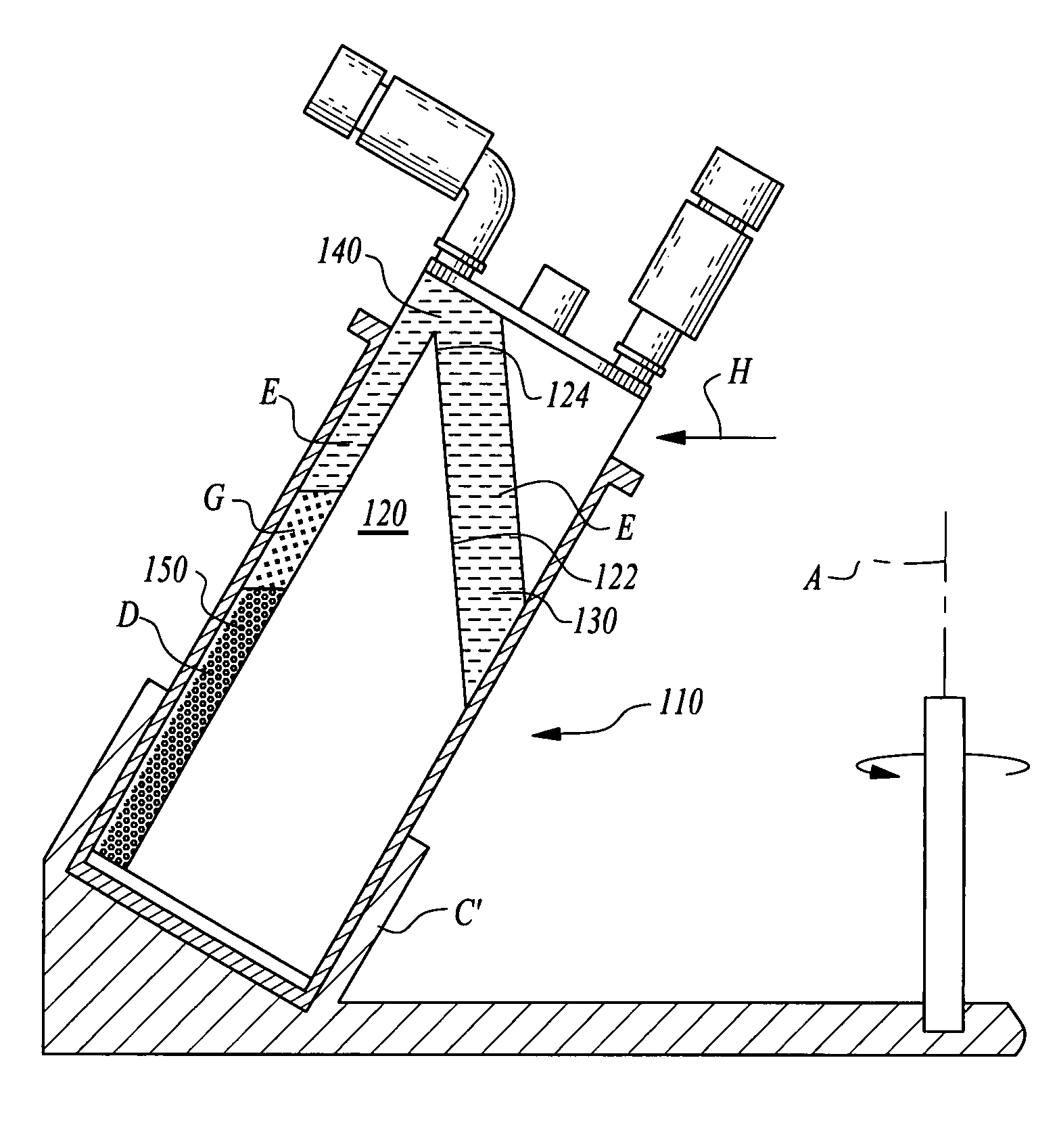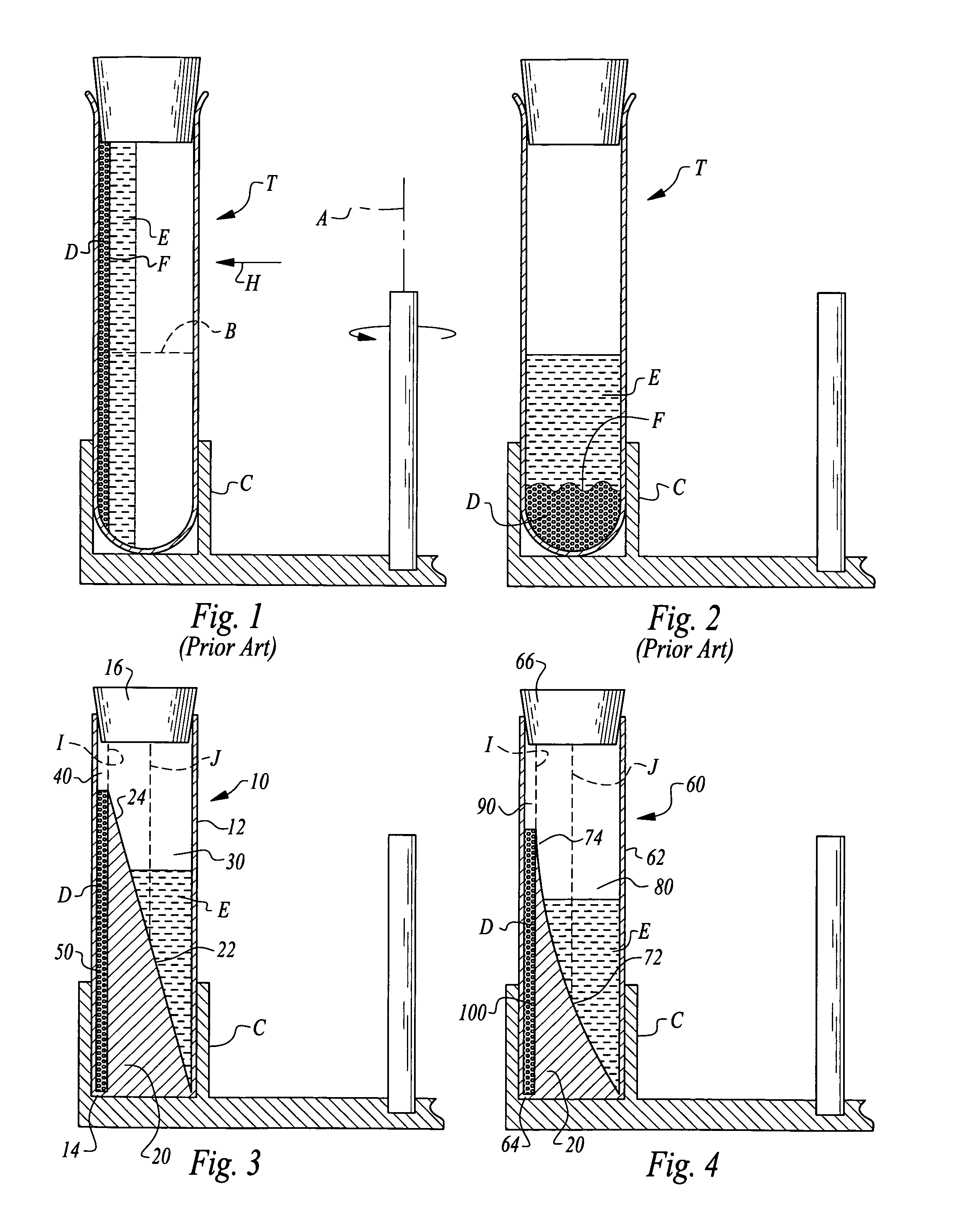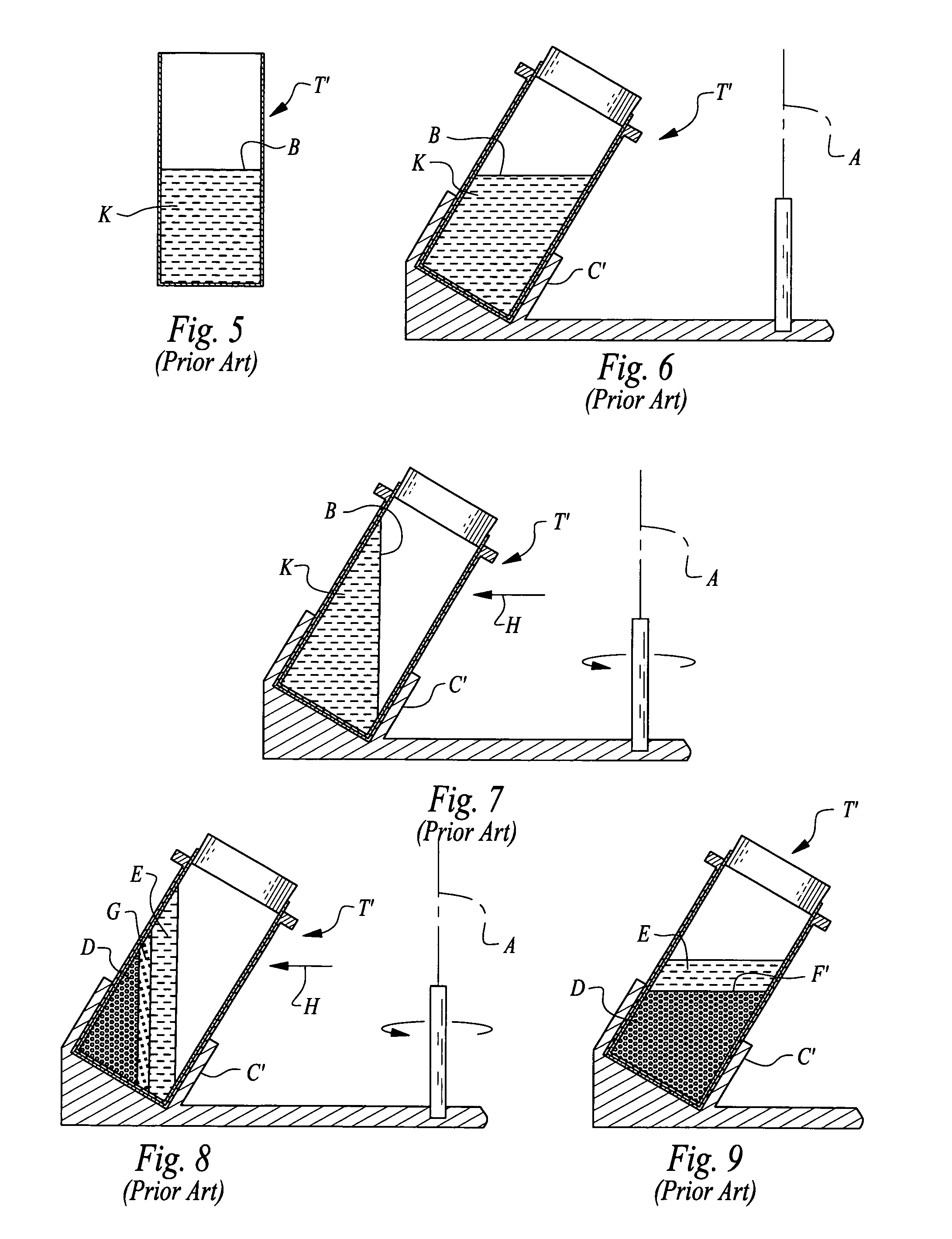It is believed that two-spin centrifugation can damage the platelets by sedimenting the platelets against a
solid, non-physiological surface.
The packing onto such a surface induces partial activation and may cause physiological damage, producing “distressed” platelets which partially disintegrate upon resuspension.
The white cells negatively affect
platelet storage and may induce adverse effects after transfusion due to
cytokine formation.
Therefore, much of the prior art focuses on leukoreduction of
platelet concentrates because non-autologous leukocytes excite deleterious immune reactions.
Since the device was designed to be used in a normal
medical setting with ample power, the permanent components, designed for long-term durability, safety and reliability, were relatively heavy, using conventional
centrifuge motors and accessories.
The
plasma fraction, being in an unconcentrated form, is not effective as a
hemostat or tissue.
A major problem with that device was the inability to maintain a seal because it is costly to maintain the precise inner
diameter of the
test tube when
mass produced.
This method of extraction necessarily is inefficient as a means of
cell recovery as the intruding needle necessarily relocates the target cells above and below the through bore as it is inserted.
Hence, these known
mechanical devices are generally capable of separating
biological fluids into component parts or fractions; however, these devices are not very precise thereby resulting in inefficient separation of the
biological fluid into component parts or fractions because of the substantial commingling of the separated fractions.
Additionally, these known
mechanical devices fail to provide a simple or efficient method to extract a fraction other than the top fraction of the sample leading to low recoveries, especially of the clinically important
buffy coat fraction.
Accordingly, this device relies on the imprecise longitudinal compression and decompression of the tube wall in order to control the flow path between fractions and fails to contain the separated fractions until after centrifugation stops and the tube wall returns to its original dimensions.
Hence, this recently patented device still fails to alleviate the problem of inefficient separation of the
biological fluid into component parts or fractions and the commingling of the separated fractions.
This embodiment describes only one centrifugation spin, and fails to alleviate the problem of inefficient separation of the
biological fluid into component parts or fractions and the commingling of the separated fractions.
Moreover, the device relies on the imprecise longitudinal compression and decompression of the tube wall in order to control the flow path between fractions and fails to contain the separated fractions until centrifugation stops and decompression of the tube wall is concluded.
Another problem associated with both embodiments of Leach, et al. is that the collection face, trough, or
sump of the
buoy must be shallow to be at a desired density level of the target
buffy coat fraction and to preclude even further accumulation of reds cells with the target white cells and platelets to be extracted.
Thus, this shallow trough results in having the target white blood cells and platelets, come to rest on the entire large surface area of the first
piston on which the white blood cells and platelets tend to stick, which reduces the efficiency of the final collection step.
A further problem associated with both embodiments of Leach, et al. is the
time consuming and laborious process of fitting and interconnecting multiple parts to the device in order to perform the extraction process.
In general, current processes for separating and extracting fractions out of
biological fluids require multiple steps that are both laborious and
time consuming and that result in poor recoveries of the target white cells and platelets.
Process simplification also has a direct correlation to process reproducibility that is also a problem with the known prior art.
Hence, the known prior art is problematic in a number of areas which include a deficiency in the
recovery efficiency of cells of interest (target cells), in the selectivity of separation for reducing
contamination or non-target cells from the target
cell population, and in the multiple step, laborious, and
time consuming extraction process.
While this method has some significant
advantage over the above-described purely manual methods, it has the drawback that the rather narrow passage between the compartments provides some resistance even during centrifugation which may prolong the operation.
Moreover, the method requires specially devised centrifugation vessels which renders it relatively costly.
Furthermore, since in accordance with that method the entire lowermost compartment must be filled with
working fluid it is not possible to vary the amount of
working fluid in a given centrifugation vessel.
The
cell isolation process requires the manipulation of large volumes of lipid-laden cells, presenting potential risks to equipment and personnel.
Although it has been promoted for nearly three decades to separate
adipose tissue components before
grafting, there remain many controversies regarding the results obtained with centrifuged
adipose tissue.
The authors state that an up-to-date, simple, but useful technique to evaluate the viability of fat grafts prior to transplant is lacking.
 Login to View More
Login to View More 


